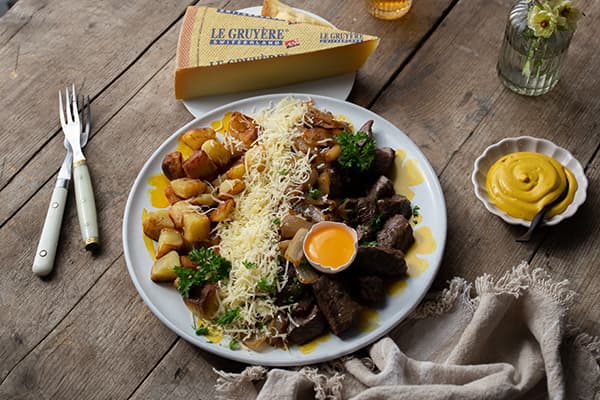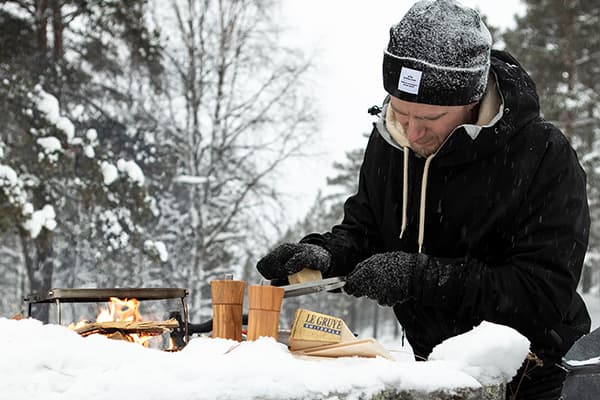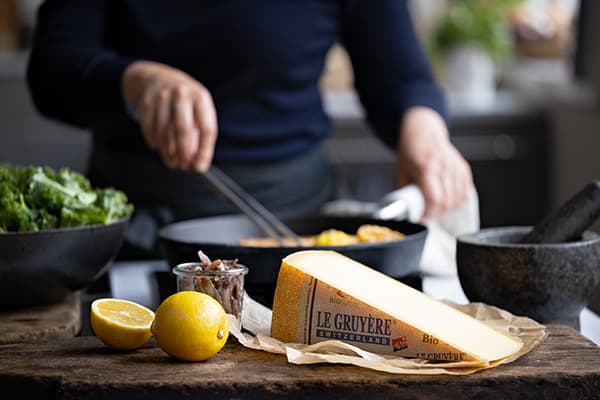Milk from happy cows
The starting point of cheese making is the raw milk, i.e., unprocessed cow’s milk. There are 2,200 dairy farmers in the area, each of them hosting an average of 25 cows.
The cows at these farms are milked twice a day: at 6 am in the morning and approximately after 5 pm in the evening.
After the milking, it is time for the cows to eat. The cows are fed fresh pasture grass in the summer and dried hay in the winter. In the summer, many dairy farmers go to mow the grass needed for feeding whenever they are not busy taking care of the livestock. The supply of hay needed is abundant: each cow consumes approximately 70 kilograms of grass and 50 to 100 litres of water per day. In return, the animal produces 20 to 25 litres of milk per day.
Mountain cows produce a bit less milk than their sisters in the valley because they tend to be more mobile, which affects the amount of milk produced. One kilogram of cheese requires 10 litres of milk, which makes the price formation of cheese more understandable. The farmer gets paid well for raw milk because high-quality milk is the cornerstone of gourmet cheese. Each dairy farmer delivers the precious product to the cheesemaker located only a few kilometres away twice a day, mornings and evenings.
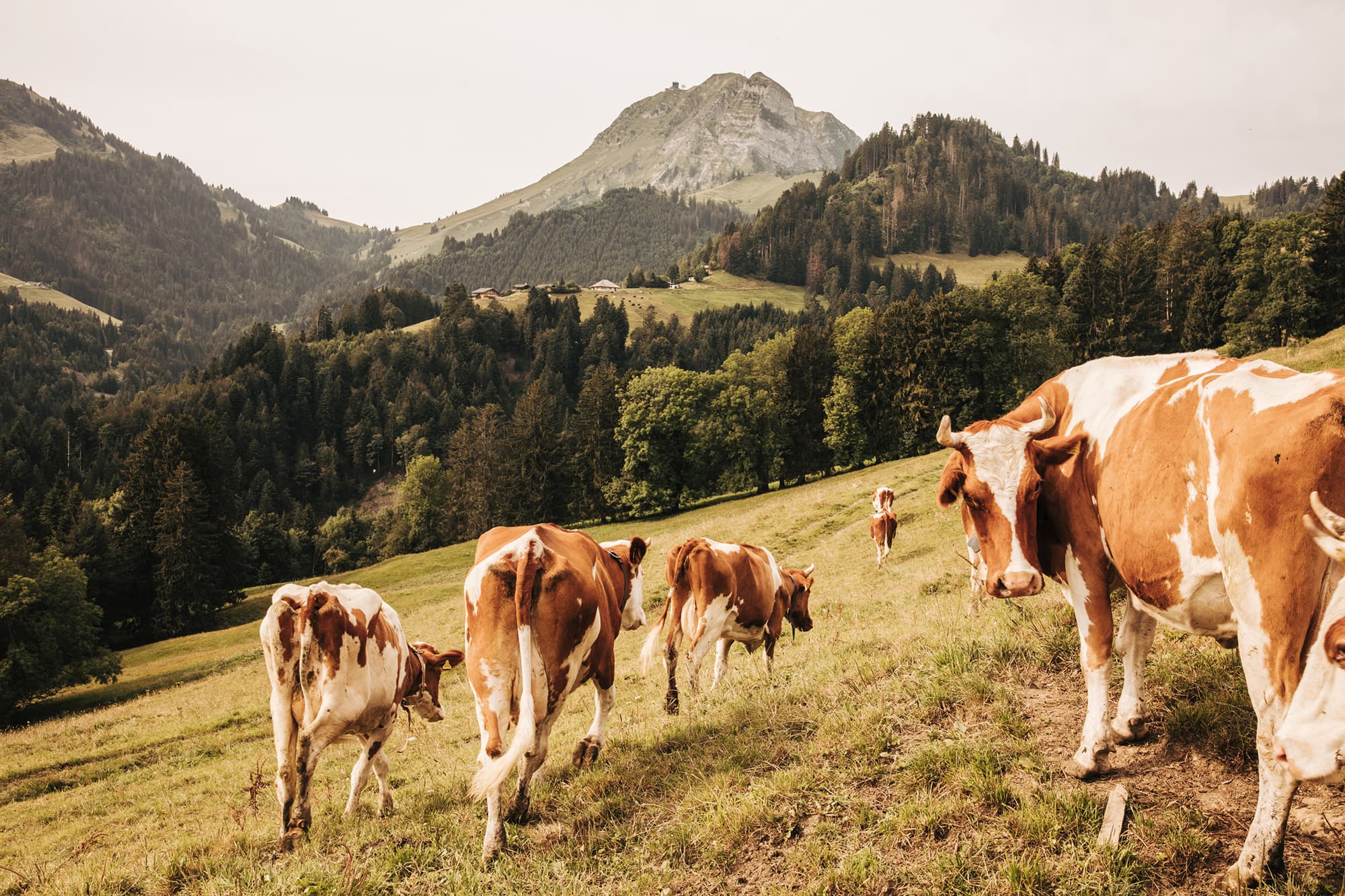
Cheese making starts in the early hours
A cheesemaker’s working day starts at 4 am. At 7 am, the dairy farmers are already queuing up in the cheese dairy courtyard in order to bring the freshly milked, warm morning milk to the village cheese dairy. The master cheesemaker cheerfully greets the farmers as he comes to take laboratory samples from the batches of milk. Each batch of milk is always tested before use.
Milk delivered in the morning is added to the previous evening’s milk awaiting in a 6,000-litre cheese making vat that has been standing in the tank overnight. The master cheesemaker adds bacterial strains to the milk so that it will mature. The next ingredient to add into the vat is rennet, a natural additive derived from a calf’s stomach that helps coagulate the milk and separate its protein from whey. Unprocessed cow’s milk contains approximately 33 grams of protein per litre.
In a bit over half an hour, the milk transforms into a solid, fine curd. Milk is not heated before renneting in order for it to preserve all its fine aromas. This is a special characteristic of raw milk.
The coagulated curd is cut using large rotating cutters called ‘cheese harps’ until it forms grains resembling those of cottage cheese. After this, the temperature of the tank contents is carefully and gradually increased until it reaches 57 degrees. This takes approximately 45 minutes.
Next, the heated curd is lowered into circular cheese moulds. Each mould has its side engraved with ‘Le Gruyère AOP’ and the licence number of the cheese dairy. The white curd is also labelled with a casein mark that shows the number of the wheel, the number of the cheesemaker, and the date of production. Even this stage introduces nothing extra into the cheese, as casein is a natural milk protein that makes up 79 per cent of the total protein in milk. For approximately 20 hours, excess fluid is pressed out from the wheels using a force of up to 900 kilograms.
After pressing, the wheels are placed in a salt bath with a salt content of approximately 22 per cent for 24 hours. In the bath, the cheese continues to release fluid, it absorbs salt and starts to form itself a rind. These three are important prerequisites for taste, stability and shelf life.
After the bath, the maturation of the cheese begins. The wheels are moved from the bath to a cellar where they rest on wooden boards for three months. The wheels are turned and washed with salt water at regular intervals. One wheel takes approximately 400 litres of raw milk, and each wheel weighs 36 kilograms. You can calculate how much raw milk that might require.
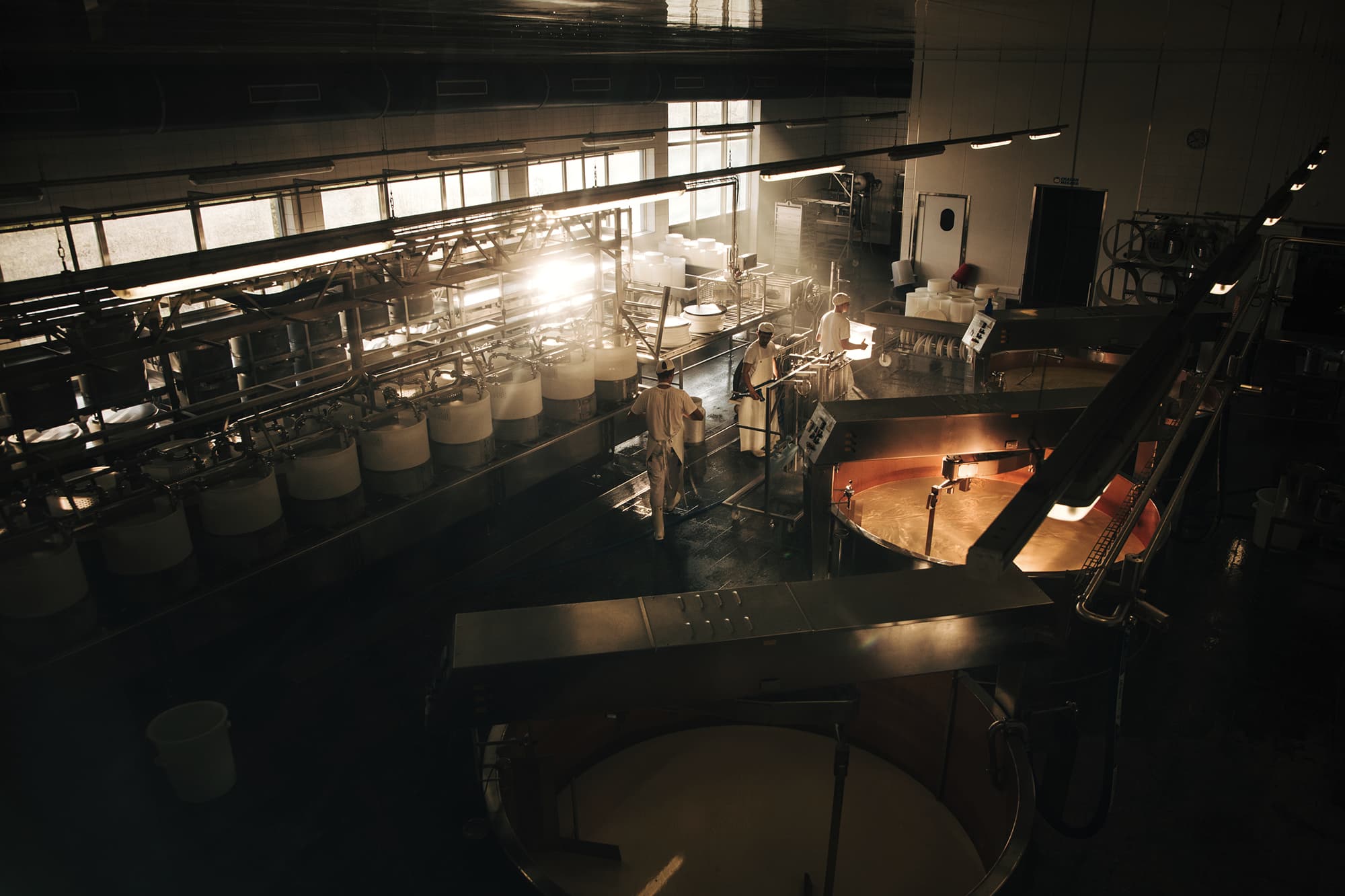
Cheese is like wine: it develops as it ripens in the cellar
Three months from the production date, the Gruyère wheels are moved from the cheese dairy to a ripening cellar where they slowly mature at a temperature of 15 degrees and an air humidity of 90 per cent. Le Gruyère AOP cheeses are ripened for 5 to 18 months.
The cheese wheels are taken care of like babies. During the ripening period, they are regularly brushed with salt water.
Robots take care of the cheeses, ensuring a homogeneous quality of work at all times.
In the cheese ripening cellar, your nose will sense a smell of ammonia here and there but this is quite a typical smell at a ripening facility. Hallways seem to go on forever, and forklifts carrying cheeses keep speeding past your right and left side.
Each cheese wheel undergoes quality control. The wheel is knocked with a small hammer, the master cheesemaker listens to its response and then drills a hole into it with a cheese drill, smells it and tastes it. This is repeated when the cheesemongers test the matured wheels. They evaluate the colour, aroma and hole formation of the cheese. Only the best quality is put up for sale.
Gruyère was protected with the AOC label in 2001 but, 10 years later, the protected designation of origin was modified to ‘Appelation d´Origine Protégée’, i.e., AOP. As the designation Gruyère AOP is globally protected, authentic Le Gruyère AOP is only produced in Switzerland. The flavour of Gruyère develops and intensifies during the ripening phase. For all Le Gruyère cheeses, the production process is the same; any differences in flavour arise from the cellar. Lovers of mild cheese enjoy the soft flavour of the classic cheese aged for 6 to 9 months. Le Gruyère AOP Réserve, which is ripened for 10 months, has a clearly stronger and more aromatic flavour. Some wheels are kept in the cellar for up to two years; these are intended for people who prefer strong cheeses.






